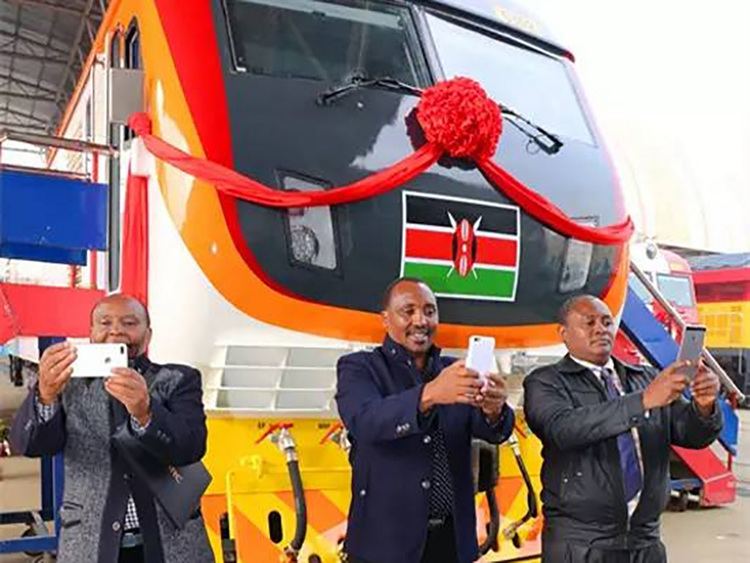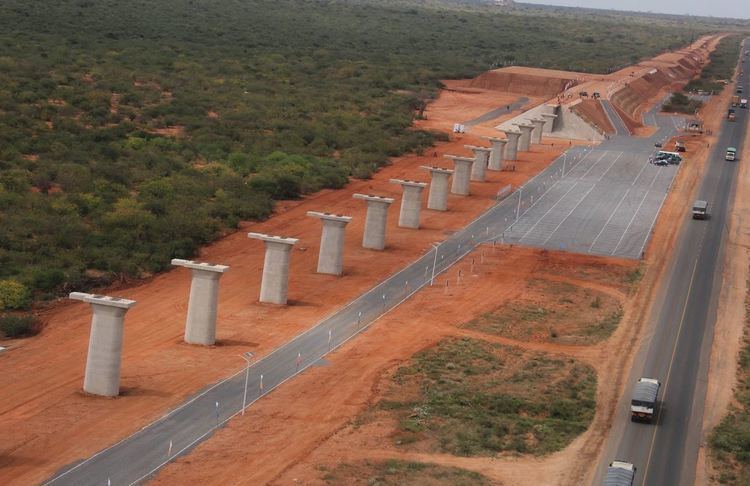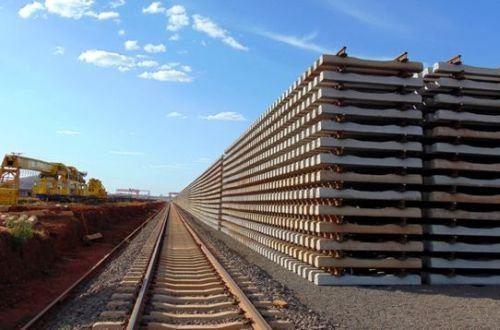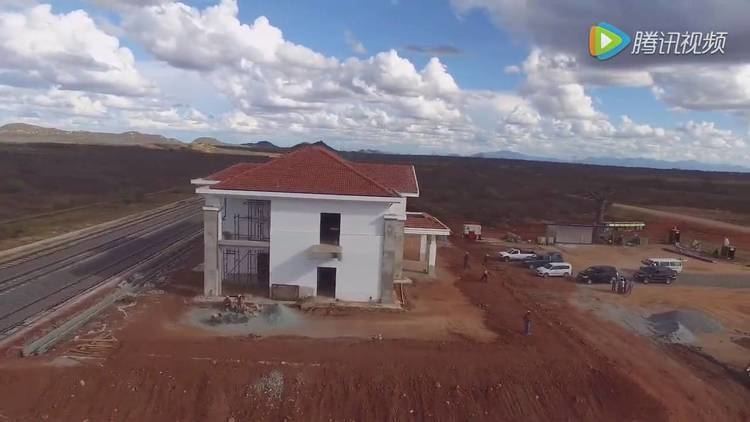System Heavy rail Planned opening June 2017 (June 2017) Electrification None | Status Under construction Line length 485 km (301 mi) | |
 | ||
Track gauge 1,435 mm (4 ft 8 ⁄2 in) standard gauge | ||
The Mombasa–Nairobi Standard Gauge Railway (SGR) is a standard gauge railway that will connect the port of Mombasa to Kenya's capital city Nairobi. Tracklaying was completed in December 2016, and the railway will be commissioned in June 2017. Commercial operation will begin in January 2018.
Contents
Under the East African Railway Master Plan, the Mombasa–Nairobi line will link up with other standard gauge railways that are being built in East Africa. Construction is already under way on Phase II of the Kenya SGR, which will extend the railway to the Uganda border by 2021.

The prime contractor on the railway is the China Road and Bridge Corporation. The project is estimated to cost US$3.6 billion, with 90% supplied by a loan from the Exim Bank of China and 10% coming from the Kenyan government. 25,000 Kenyans were hired to work on the railway.

Upon completion, the railway will be operated for five years by the China Communications Construction Company. The design capacity of the railway is 22 million tonnes per year.

Route

The SGR begins at Port Reitz, just west of Mombasa Island. The line passes through the transportation corridor between Tsavo East National Park and Tsavo West National Park. As it approaches Nairobi, the railway crosses the 2.6 km long Athi River Super Bridge, the 6th longest bridge in Africa at the time of its construction. The main station for Nairobi is at Syokimau, near Jomo Kenyatta International Airport.

Phase 2 of the SGR will extend the Mombasa–Nairobi line to Naivasha, and eventually to the Uganda border. A connecting standard gauge railway is being built in Uganda by another Chinese state-owned company, giving landlocked Uganda high-capacity railway transport to the sea.
The new line runs generally parallel to the old Uganda Railway, a metre gauge railway built by the British in the late 19th century. However, the new line follows a straighter alignment than the metre gauge railway, allowing for higher speeds. Because of terrain, large portions of the railway are built on viaducts, embankments, and cuttings. For example, the metre gauge railway tackled the terrain at Mazeras by using a spiral. The SGR passes through the region on two bridges; the 43.5 metre tall Mazeras-2 bridge is the highest bridge on the Mombasa–Nairobi route. There are a total of 98 bridges between Mombasa and Nairobi.
Viaducts are also used for environmental protection. The highway and metre gauge railway pass through Tsavo National Park at ground level, which carries the risk of collisions with wildlife. Part of the SGR is elevated on viaducts, allowing wildlife to pass without risk of injury. The rest is elevated on embankments, and six underpasses have been constructed to allow wildlife to cross.
Passenger services run from Mombasa West station to Nairobi South station in Syokimau, where passengers can transfer to the metre gauge trains into Nairobi city centre. Freight services are provided between Port Reitz and an inland container depot at Embakasi in Nairobi.
History
In the 2000s, Kenya's colonial-era metre gauge railways deteriorated from a lack of maintenance. By 2016, passenger trains were taking 24 hours to travel from Nairobi to Mombasa, a far cry from the 12 hour timetable of the early 1990s. Freight transported from the Port of Mombasa fell from 4.8 million tonnes in the 1980s to 1.5 million tonnes in 2012. In 2014, Rift Valley Railways, the operator of railways in Kenya and Uganda, reported a loss of $1.5 million.
At the same time, the Chinese government was funding railway construction in other African countries. In 2011, Kenya signed a memorandum of understanding with the China Road and Bridge Corporation to build a standard gauge railway from Mombasa to Nairobi. Financing was finalised in May 2014, with the China Exim Bank extending a loan for 90% of the project cost, and the remaining 10% coming from the Kenyan government.
Tracklaying was completed, and the three types of locomotive that will operate the railway were unveiled, in December 2016. The railway will go into trial operation in June 2017, and commercial service will begin in January 2018.
